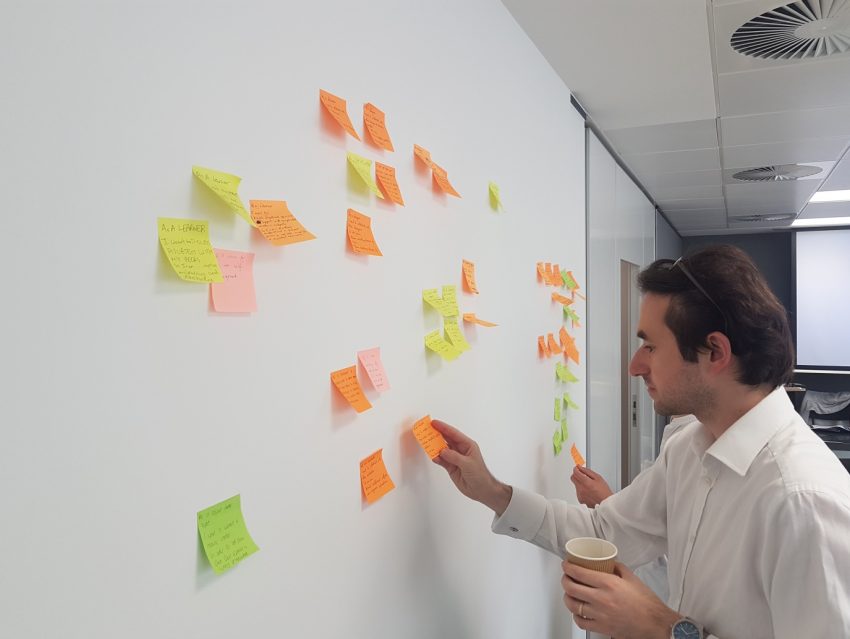This is the second in our series of blog posts on the way we have tested our assumptions around a national learning solution for health and care employees.
At the first, of two, Health Education England learning technology ‘Ideathon’ users from across the UK were gathered to test a number of concepts to understand how a proposed learning solution might operate.
The Discovery phase of our work identified a number of ways in which learners might want to interact with learning in the future. The purpose of this ‘Ideathon’ was to test some of the hypotheses identified during our Discovery phase so that we know what we’re building is the right solution.
This ‘Ideathon’ tested six concepts during the course of the day with exercises designed to identify solutions to the most pressing concerns and riskiest assumptions.
Activity 1 – Most important information on a page
Which information do you consider to be most important and least important on a webpage? This was the question asked of our participants to understand their behaviours and priorities. Printed versions of website wireframes showing learning resource records were annotated by participants to identify those items which were critical to the resource meeting their needs.
This exercise was coupled with an activity that explored how users would find information and what criteria they might use to search. Everyone agreed that the work of Google on search was exemplary so should be emulated, where possible.

Activity 2: Reviewing and rating pages
In the second exercise, participants were asked to consider the various ways in which products and services are reviewed on the internet, such as using simple star ratings, or more comprehensive written reviews.
There was a discussion about the virtues of various methods which were recorded and will be used to design an interface which satisfies the needs of all the users.
Exercise 3 Searching for resources
Searching for and finding the right learning resources on the learning solution will be very important and as there may be many search results, it’s important to only display key information to help learners make the right choice. But what is that key information?
In this exercise, participants were presented with information on a learning resource and asked to remove all non-essential information for the search results page.

Exercise 4: What motivates users to share?
In this short exercise, individuals were asked to consider a series of statements on sharing from different personas. They were asked to consider how true or how likely the statements were so that accurate personas and motivations for sharing could be determined.

Activity 5 – Stakeholders, personas and collaboration
No technology planning session would be complete without copious sticky notes and this event was no exception. However, these were post-its with a purpose!
Participants were asked to identify different stakeholder groups and their individual needs and then asked to identify how they might collaborate with each other.
The result was a complex but comprehensive set of post-its that told the story of how a user might navigate this complex journey.

Activity 6 – Ranking comments
The final activity of the day involved ranking questions and answers on a website in a similar manner to websites like stack overflow. Participants explored how collaboration might work on a practical basis using upvotes, downvotes and discussion threads.
This is the second in our series of blog posts on the way we have tested our assumptions around a national learning solution for health and care employees.
At the first, of two, Health Education England learning technology ‘Ideathon’ users from across the UK were gathered to test a number of concepts to understand how a proposed learning solution might operate.
The Discovery phase of our work identified a number of ways in which learners might want to interact with learning in the future. The purpose of this ‘Ideathon’ was to test some of the hypotheses identified during our Discovery phase so that we know what we’re building is the right solution.
This ‘Ideathon’ tested six concepts during the course of the day with exercises designed to identify solutions to the most pressing concerns and riskiest assumptions.
